13.6 Spin–Spin Splitting in 1H NMR Spectra
In the 1H NMR spectra we’ve seen thus far, each different kind of proton in a molecule has given rise to a single peak. It often happens, though, that the absorption of a proton splits into multiple peaks, called a multiplet. For example, in the 1H NMR spectrum of bromoethane shown in Figure 13.8, the –CH2Br protons appear as four peaks (a quartet) centered at 3.42 δ and the –CH3 protons appear as three peaks (a triplet) centered at 1.68 δ.
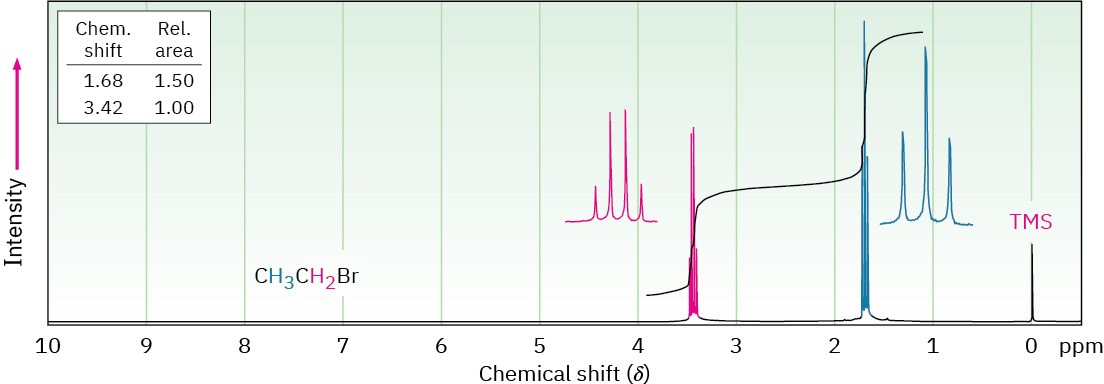
Figure 13.8 The 1H NMR spectrum of bromoethane, CH3CH2Br. The –CH2Br protons appear as a quartet at 3.42 δ, and the –CH3 protons appear as a triplet at 1.68 δ.
Called spin–spin splitting, multiple absorptions of a nucleus are caused by the interaction, or coupling, of the spins of nearby nuclei. In other words, the tiny magnetic field produced by one nucleus affects the magnetic field felt by a neighboring nucleus. Look at the –CH3 protons in bromoethane, for example. The three equivalent –CH3 protons are neighbored by two other magnetic nuclei—the two protons on the adjacent –CH2Br group. Each of the neighboring –CH2Br protons has its own nuclear spin, which can align either with or against the applied field, producing a tiny effect that is felt by the –CH3 protons.
There are three ways in which the spins of the two –CH2Br protons can align, as shown in Figure 13.9. If both proton spins align with the applied field, the total effective field felt by the neighboring –CH3 protons is slightly larger than it would be otherwise. Consequently, the applied field necessary to cause resonance is slightly reduced. Alternatively, if one of the –CH2Br proton spins aligns with the field and one aligns against the field, there is no effect on the neighboring –CH3 protons. (This arrangement can occur in two ways, depending on which of the two proton spins aligns which way.) Finally, if both –CH2Br proton spins align against the applied field, the effective field felt by the –CH3 protons is slightly smaller than it would be otherwise, and the applied field needed for resonance is slightly increased.
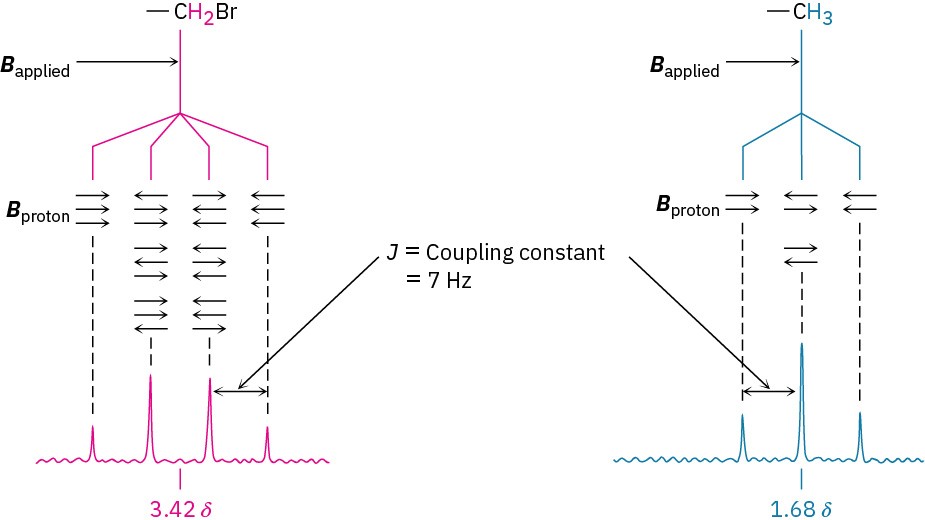
Figure 13.9 The origin of spin–spin splitting in bromoethane. The nuclear spins of neighboring protons, indicated by horizontal arrows, align either with or against the applied field, causing the splitting of absorptions into multiplets.
Any given molecule has only one of the three possible alignments of –CH2Br spins, but in a large collection of molecules, all three spin states are represented in a 1 : 2 : 1 statistical ratio. We therefore find that the neighboring –CH3 protons come into resonance at three slightly different values of the applied field, and we see a 1 : 2 : 1 triplet in the NMR spectrum. One resonance is a little above where it would be without coupling, one is at the same place it would be without coupling, and the third resonance is a little below where it would be without coupling.
In the same way that the –CH3 absorption of bromoethane is split into a triplet, the –CH2Br absorption is split into a quartet. The three spins of the neighboring –CH3 protons can align in four possible combinations: all three with the applied field, two with and one against (three ways), one with and two against (three ways), or all three against. Thus, four peaks are produced for the –CH2Br protons in a 1 : 3 : 3 : 1 ratio.
As a general rule, called the n + 1 rule, protons that have n equivalent neighboring protons show n + 1 peaks in their NMR spectrum. For example, the spectrum of 2-bromopropane in Figure 13.10 shows a doublet at 1.71 δ and a seven-line multiplet, or septet, at 4.28 δ. The septet is caused by splitting of the –CHBr– proton signal by six equivalent neighboring protons on the two methyl groups (n = 6 leads to 6 + 1 = 7 peaks). The doublet is due to signal splitting of the six equivalent methyl protons by the single –CHBr– proton (n = 1 leads to 2 peaks). Integration confirms the expected 6 : 1 ratio.
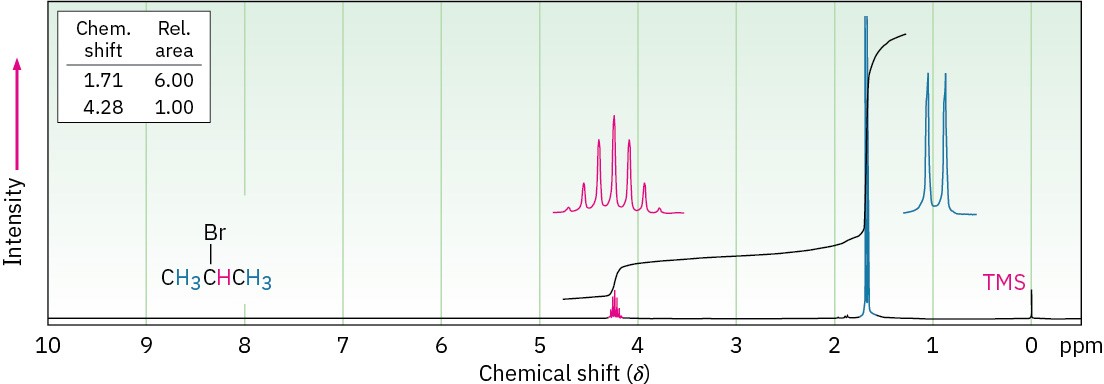
Figure 13.10 The 1H NMR spectrum of 2-bromopropane. The –CH3 proton signal at
1.71 δ is split into a doublet, and the –CHBr– proton signal at 4.28 δ is split into a septet. Note that the distance between peaks is the same in both multiplets. Note also that the two outer peaks of the septet are small enough to be nearly missed.
The distance between peaks in a multiplet is called the coupling constant and is denoted J. Coupling constants are measured in hertz and generally fall in the range 0 to 18 Hz. The exact value of the coupling constant between two neighboring protons depends on the geometry of the molecule, but a typical value for an open-chain alkane is J = 6 to 8 Hz. The same coupling constant is shared by both groups of hydrogens whose spins are coupled and is independent of spectrometer field strength. In bromoethane, for instance, the – CH2Br protons are coupled to the –CH3 protons and appear as a quartet with J = 7 Hz. The – CH3 protons appear as a triplet with the same J = 7 Hz coupling constant.
Because coupling is a reciprocal interaction between two adjacent groups of protons, it’s sometimes possible to tell which multiplets in a complex NMR spectrum are related to each other. If two multiplets have the same coupling constant, they are probably related, and the protons causing those multiplets are therefore adjacent in the molecule.
The most commonly observed coupling patterns and the relative intensities of lines in their multiplets are listed in Table 13.4. Note that it’s not possible for a given proton to have five equivalent neighboring protons. (Why not?) A six-line multiplet, or sextet, is therefore found only when a proton has five nonequivalent neighboring protons that coincidentally happen to be coupled with an identical coupling constant J.
Table 13.4 Some Common Spin Multiplicities
|
Multiplet |
Ratio of intensities |
|
|
0 |
Singlet |
1 |
|
1 |
Doublet |
1 : 1 |
|
2 |
Triplet |
1 : 2 : 1 |
|
3 |
Quartet |
1 : 3 : 3 : 1 |
|
4 |
Quintet |
1 : 4 : 6 : 4 : 1 |
|
6 |
Septet |
1 : 6 : 15 : 20 : 15 : 6 : 1 |
Spin–spin splitting in 1H NMR can be summarized by three rules.
RULE 1
Chemically equivalent protons don’t show spin–spin splitting. Equivalent protons may be on the same carbon or on different carbons, but their signals don’t split.
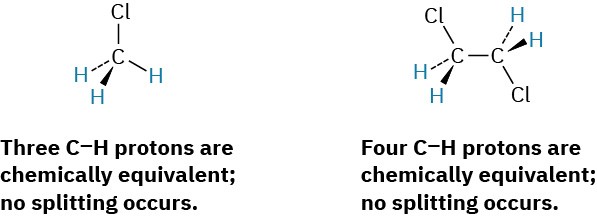
RULE 2
The signal of a proton with n equivalent neighboring protons is split into a multiplet of n + 1 peaks with coupling constant J. Protons that are farther than two carbon atoms apart don’t usually couple, although they sometimes show weak coupling when they are separated by a π bond.

RULE 3
Two groups of protons coupled to each other have the same coupling constant, J.
The spectrum of para-methoxypropiophenone in Figure 13.11 further illustrates these three rules. The downfield absorptions at 6.91 and 7.93 δ are due to the four aromatic-ring protons. There are two kinds of aromatic protons, each of which gives a signal that is split into a doublet by its neighbor. The –OCH3 signal is unsplit and appears as a sharp singlet at
3.84 δ. The –CH2– protons next to the carbonyl group appear at 2.93 δ in the region expected for protons on carbon next to an unsaturated center, and their signal is split into a quartet by coupling with the protons of the neighboring methyl group. The methyl protons appear as a triplet at 1.20 δ in the usual upfield region.
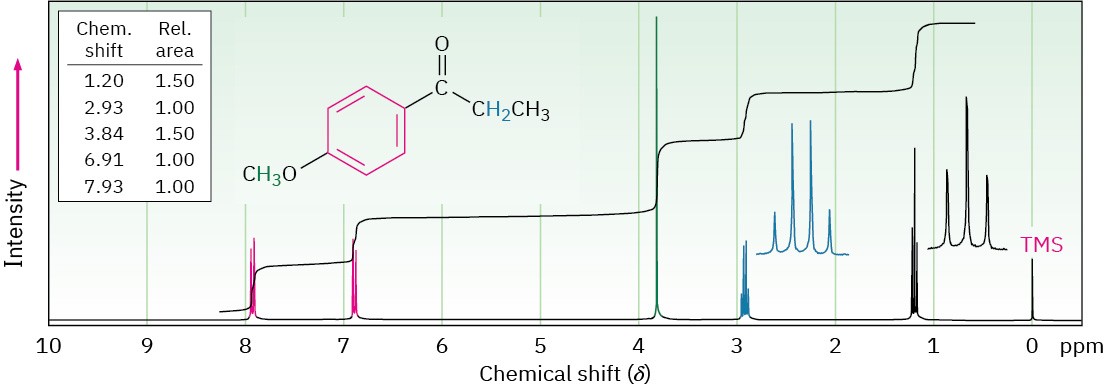
Figure 13.11The 1H NMR spectrum of para-methoxypropiophenone.
Worked Example 13.2
Assigning a Chemical Structure from a 1H NMR Spectrum
Propose a structure for a compound, C5H12O, that fits the following 1H NMR data: 0.92 δ (3 H, triplet, J = 7 Hz), 1.20 δ (6 H, singlet), 1.50 δ (2 H, quartet, J = 7 Hz), 1.64 δ (1 H, broad singlet).
Strategy
It’s best to begin solving structural problems by calculating a molecule’s degree of unsaturation (we’ll see this again in Worked Example 13.4). In the present instance, a formula of C5H12O corresponds to a saturated, open-chain molecule, either an alcohol or an ether.
To interpret the NMR information, let’s look at each absorption individually. The three- proton absorption at 0.92 δ is due to a methyl group in an alkane-like environment, and the triplet-splitting pattern implies that the CH3 is next to a CH2. Thus, our molecule contains an ethyl group, CH3CH2–. The six-proton singlet at 1.20 δ is due to two equivalent alkane- like methyl groups attached to a carbon with no hydrogens, (CH3)2C, and the two-proton quartet at 1.50 δ is due to the CH2 of the ethyl group. All 5 carbons and 11 of the 12 hydrogens in the molecule are now accounted for. The remaining hydrogen, which appears as a broad one-proton singlet at 1.64 δ, is probably due to an OH group, since there is no other way to account for it. Putting the pieces together gives the structure: 2-methyl-2- butanol.
Solution
Problem 13-9
 Predict the splitting patterns you would expect for each proton in the following molecules: (a)
Predict the splitting patterns you would expect for each proton in the following molecules: (a)
(b)

(c)

(d)
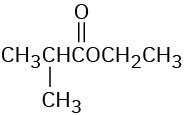
(e)
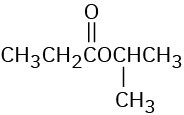
(f)

Problem 13-10
Draw structures for compounds that meet the following descriptions: (a)
C2H6O; one singlet (b)
C3H7Cl; one doublet and one septet (c)
C4H8Cl2O; two triplets (d)
C4H8O2; one singlet, one triplet, and one quartet Problem 13-11
The integrated 1H NMR spectrum of a compound of formula C4H10O is shown in Figure
13.12. Propose a structure.
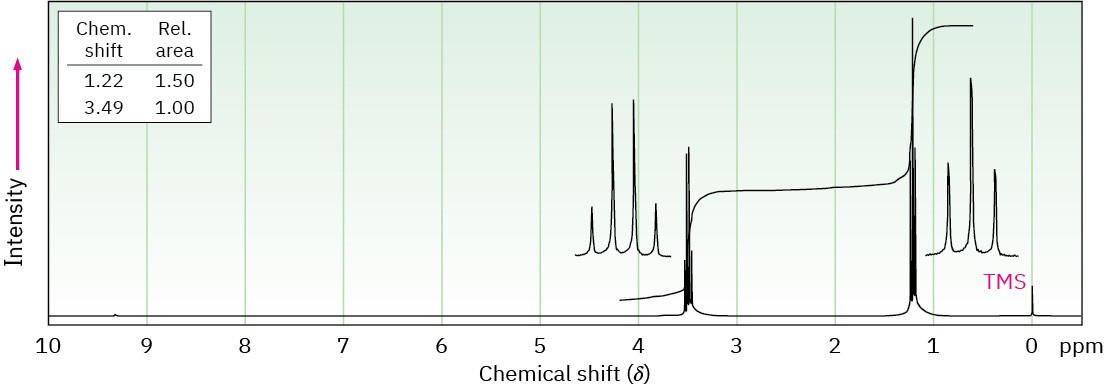
Figure 13.12 An integrated 1H NMR spectrum for Problem 11.

